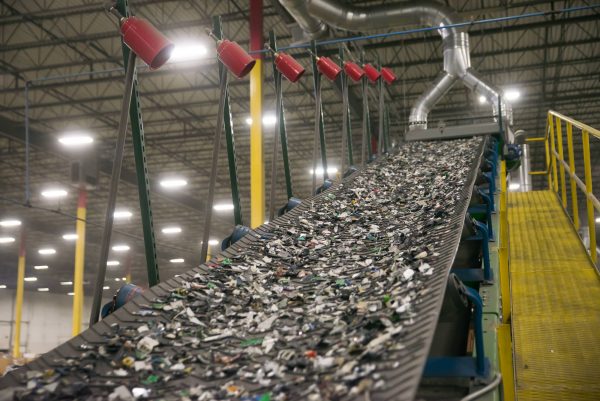
Late last year, the United Nations University (UNU) released its annual report on the state of e-waste, known as the Global E-Waste Monitor Report. Every year, the UNU works with the International Telecommunication Union (ITU) and the International Solid Waste Association to collect data needed to compile this report. The report contains important information on the size of the e-waste problem and the initiatives that have been established to resolve this major issue. Here’s a look at some of the highlights from this 116-page report on e-waste:
More E-Waste is Being Produced
In 2016, people all over the world generated over 44.7 million metric tons of e-waste. This equals about 13.4 pounds of e-waste per person, which is an increase over the 12.8 pounds per person generated just two years earlier. Based on data collected over the last several years, experts predict that the amount of e-waste being generated will continue to rise in the near future. In fact, it’s estimated that over 52.2 million metric tons of e-waste will be generated in the year 2021 alone.
Developed vs. Developing Countries
It’s not surprising to see that there is a huge difference between the amount of e-waste generated in developed countries and the amount of e-waste generated in developing countries. The report shows that the richest country in the world generated an average of 43.2 pounds of e-waste per inhabitant, while the poorest country in the world generated an average of 1.3 pounds per person. This shows how important it is for developed countries to do their part to resolve the problem that they are responsible for creating.
E-Waste is Being Sent to Landfills
The report reveals that only about 20% of generated e-waste is collected and recycled in a responsible manner. Instead, the vast majority of the e-waste generated in today’s world is sent to landfills or incinerators, where it can cause harm to the environment and the local community. How? E-waste can slowly start to leak toxic chemicals when it is left sitting in a landfill. Eventually, these chemicals can absorb into the ground and contaminate the local drinking water. Incinerating e-waste is not a good idea either since this releases toxic chemicals into the atmosphere. Because sending e-waste to landfills or incinerators can lead to dangerous consequences, it’s important to see an increase in the percentage of e-waste that is responsibly recycled.
E-Waste Legislation
In 2014, only 44% of the population was covered by legislation that regulated the disposal of e-waste. However, the report revealed that 66% of the population was covered by these laws in 2016. This increase indicates that lawmakers around the world are finally starting to realize the importance of solving the e-waste problem. But, it’s important to note that some countries with these laws do not strictly enforce them. To truly resolve this problem, lawmakers and law enforcement must be ready and willing to hold people who violate these laws accountable for their actions.
Consumers Replace Electronic Devices Frequently
The old expression “if it ain’t broke, don’t fix it” does not apply to electronic devices. The researchers discovered that most consumers replace electronic devices because they want a newer, state-of-the-art model, not because the device they own is broken and inoperable. The average consumer in the U.S. and Europe replaces their smartphone every 18 months to two years, regardless of whether it is still fully functional.
Smartphones are not the only devices that are being replaced faster than ever before. Both consumers and businesses are replacing all of their electronic devices—TVs, laptops, desktops, tablets, and routers—well before the device becomes inoperable or outdated. The desire to buy new devices before the old ones need to be replaced is one of the many factors that has contributed to the rise in e-waste.
Raw Materials Are Being Wasted
Electronic devices contain valuable raw materials, including gold, copper, silver, and nickel. When electronic devices are recycled, these raw materials can be extracted and resold to manufacturers who can use them to create new products. However, when electronic devices are sent to landfills or incinerators, these raw materials are completely wasted. If these raw materials were extracted and reused, manufacturers would not need to mine the earth for new materials.
How much is being wasted? It’s estimated that the value of the raw materials in the e-waste generated in 2016 is somewhere around $67 billion. As the amount of e-waste that is generated continues to increase year after year, so will the value of the raw materials that is being wasted.
Small Devices Account For A Lot of E-Waste
The researchers who compiled this report also broke down the contents of the e-waste that was generated in 2016 to analyze what devices are being disposed of at the highest rates. Researchers found that small devices such as smartphones and tablets account for about 46% of all of the e-waste generated in 2016. Large electronic devices, such as laptops and desktop computers, account for another 20% of e-waste analyzed in 2016. On the other end of the spectrum, screens only accounted for about 14.7% of the e-waste. This category of e-waste is expected to shrink even further over the next few years since many devices are no longer being made with heavy CRT screens.
As you can see, e-waste is a serious problem that needs to be addressed. Do your part to reduce the amount of e-waste that ends up in landfills by working with a reliable e-waste recycler. ERI is the leading recycler of e-waste, and is trusted by dozens of Fortune 500 companies in various industries. For more information on recycling your electronics, or to request a quote for your company, contact us today.